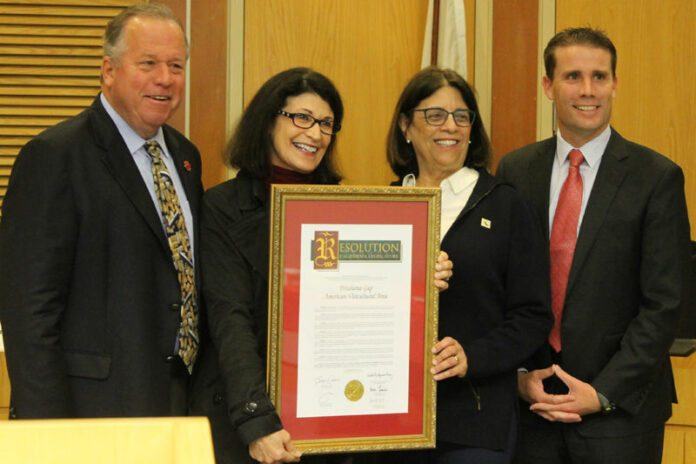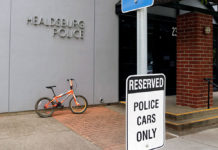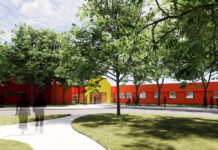
Water conservation, fire impacts discussed
At the April 6 Joint Information Hearing of the California State Senate Select Committee on California’s Wine Industry and the California Assembly Select Committee on Wine the overarching theme of the meeting was: “We are open for business.” While there are impacts from the October fires, the message went, stories of our demise are greatly exaggerated. So come on down for your corporate event, wine tasting weekend, wedding or bachelorette party.
The meeting was hosted in Healdsburg by Bill Dodd, co-chair of the California Senate Select Committee on California’s Wine Industry, Mike McGuire, co-chair of the California Senate Select Committee on California’s Wine Industry and Cecilia Aguiar-Curry, chair of the California Assembly Select Committee on Wine.
Carrying the tagline of “Fire and Water” the issues covered in the meeting included: Fire and Industry Recovery Update, Industry and Tourism Update and Water Supply. Each topic had a separate series of panelists and both chairs and the public had an opportunity to ask questions or provide feedback to panelists.
The Fire and Industry Recovery panelists were Karissa Kruse, president of Sonoma County Winegrowers and Garrett Buckland, President of the Napa Valley Grapegrowers. Both of them highlighted the reports that in many cases, farm and vineyard land seemed to function as a natural firebreak and the relatively small number of vineyard and winery properties affected.
In Sonoma County only 2,500 acres of vineyard land was in the fire zone, out of 60,000 total vineyard acres, and of those 2,500 acres, only 91.74 acres were reported as having experienced damage and crop loss. Those losses are estimated at around $1 million. In Napa County, only 126 vineyard acres fall into the category of heavily damaged or destroyed.
They both expressed that their growers were awaiting bud break, due any day, to get a feel for any potential long term effects of the fires on the vines. They also said that initial reports on the quality of the 2017 vintages seems excellent, since in both counties 90 percent of harvest had been completed when the fires struck.
“Everybody was grumbling about the high heats over Labor Day, but the expedited the harvest, in a way, turned out to be a good thing,” Kruse said.
While the physical vineyards may have been largely unscathed, not so the workers who keep them producing. “The impact on employees is where we started to feel real concern,” Kruse said. “Nine days after the fires we launched a housing fund that has raised $950,000. Over 200 agricultural workers’ families have been supported. We’ve offered rent support for up to two years, gift cards, we’ve bought RVs. We’re now shifting gears to longer term housing for our employees. Our biggest ask (at this meeting) is to remove barriers to quick affordable housing options.”
McGuire assured Kruse that that is a marquee issue for the state, which is working on putting forward an affordable housing bill that would include $300 million for ag-worker housing.
McGuire asked if they had numbers, or even anecdotal information, about impacts on wineries. Kruse responded that they didn’t have anything firm, and called the information “mixed” and “anecdotal.”
“I’ve heard for some folks the winter barrel tastings were better than ever, others say they had less customers, but the ones they had were spending more, so it’s hard to generalize,” Kruse said. “October is a prime tourism month and we suffered a lot during October and November, but everyone is doing a fantastic job to promote the industry. I think recovery is happening case by case, and it will take a full year to really understand if there has been a change.”
In the Industry and Tourism Update panel, the rosy picture of the local environment continued to be a theme. Panelists were Honore Comfort, Executive-in-Residence at the Wine Business Institute at Sonoma State University, Claudia Vecchio, president and CEO of Sonoma County Tourism, Clay Gregory President and CEO of Visit Napa Valley and Shelby Sim, President and CEO of Visit The Santa Ynez Valley (Santa Barbara’s wine country was impacted by fires and mudslides).
Comfort said that her organization collected data from all impacted counties (Sonoma, Napa, Mendocino, Lake) and had three key findings. “We’ve put together talking and education points that we can share to make sure the correct story and image is portrayed,” she said. “That the overall impact of the fires was localized and limited, the true impact small and the 2017 vintage will be the quality they’ve come to expect.”
Vecchio started her current job on Nov. 1, so she missed much of the hands-on experience of the fires, but she continued on the theme of the importance of the message that wine country is open for business. “Perception is everything in travel,” she said.
McGuire alluded to and Vecchio confirmed that impact numbers are a little hard to calculate at this point, because the hotel numbers are extremely skewed due to the occupancy of both displaced residents and workers. “There’s an odd complexity in numbers right now. Usually, we use hotel occupancy, but those key hotels and flag hotels on the 101 corridor are showing tremendous results. Year over year we are up 12 to 17 percent, so one could look and say everything is fine. But when you talk to the inns and the bed and breakfasts and these smaller entities outside that 101 corridor you find tremendous pressure on the businesses there,” Vecchio said, adding they were beginning a new program called “Sonoma County Explorer to encourage more traffic to other areas and businesses.
Both Vecchio and Gregory lauded the way the two counties came together to run joint advertising in large newspapers touting the strong state of wine country.
The final panel on Water Supply featured Glenn McGourty, Viticulture and Plant Science Advisor in Mendocino County for the UC Cooperative Extension, Dr. Michael Anderson, California State Climatologist at the California Department of Water Resources, Eric Larson, Environmental Program Manager at the California Department of Fish and Wildlife, and Katie Jackson, Vice President for External Affairs and Sustainability at Jackson Family Wines.
McGourty discussed some of the scientific advances being brought to bear for assisting the wine industry with its water usage, including surface renewal technology, which will tell a grower exactly how much and when to irrigate and could save 50 to 100,000 gallons of water per acre, using crop cover on the soils, which allows soil in one acre to hold an additional 38,000 more gallons of water, and various ways to control frost in vineyards so that irrigation isn’t needed to prevent frost.
Techniques being explored are the use of anti frost fans and removing the “nuclei bacteria” that are at the center of every frost crystal, either by treating crops with copper or utilizing other bacteria that ingest the nuclei bacteria.
Anderson discussed climate change issues, and the need to improve forecasting ability, because more and more Northern California water will arrive in the form of atmospheric rivers and the ability to capture and utilize the water from those is often dependent on how much time there is to prepare.
“As the world warms, the notion is that the bulk of the distribution from atmospheric rivers (increases) and the ability to forecast and manage those big events and the role that will play in managing what we do (becomes more important),” Anderson said.
Larson discussed the needs of the local wildlife population, and how the wine industry can help, primarily by utilizing off-stream storage as well as reducing overall water use. This led to an outburst from Dodd, who apparently had been trying to get those approvals through with little success.
“I think we all know in this room, this issue been discussed with very little traction gained,” Dodd said. “There has to be away to expedite the approval process (for off-stream storage) or at least a plan to help this industry to achieve that, that is fish friendly and efficient. I’m taking this as an invitation to talk.”
Jackson brought it home by discussing the various projects undertaken by her family’s company to approve sustainability and limit water use, including recycling water, using a UV system to clean containers, using empty tanks to store water gathered on rooftops to power cooling tanks, and various groundwater recharge projects. They are also experimenting with the cover crop idea and have been able to release water into critical tributaries in the summers.
The meeting kicked off with the award of a brand new wine appellation, the Petaluma Gap Appellation, formerly part of the Sonoma Coast Appellation.









